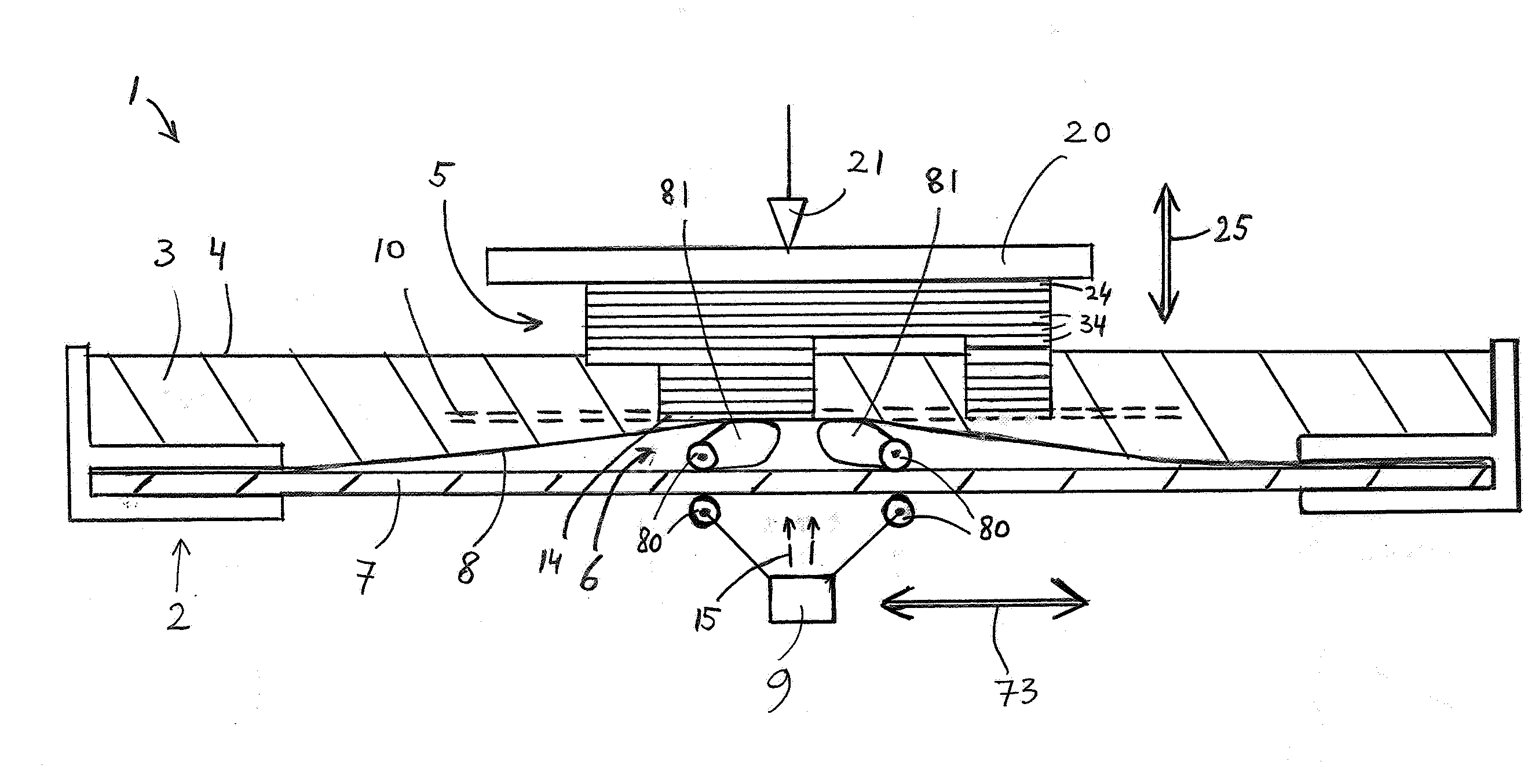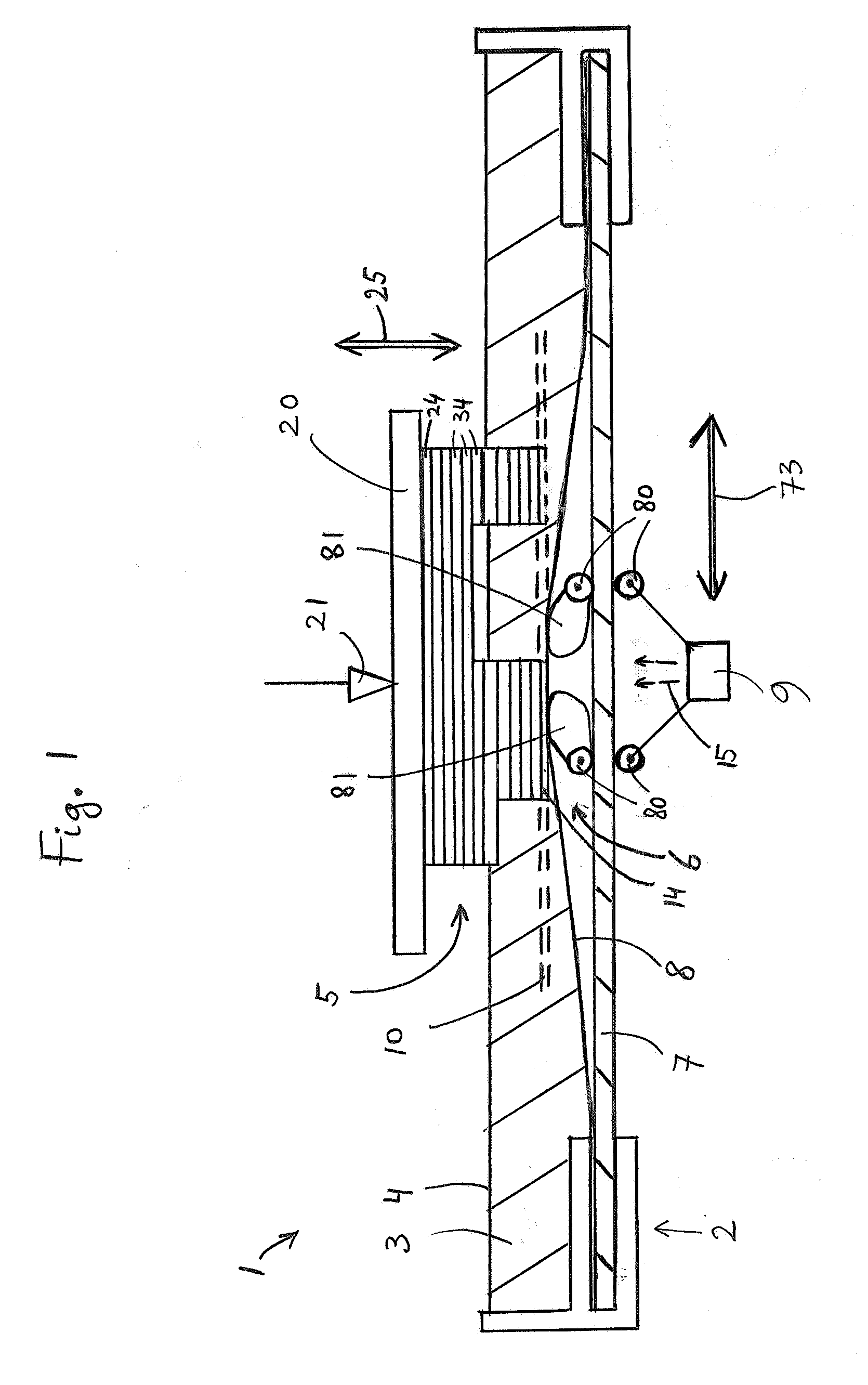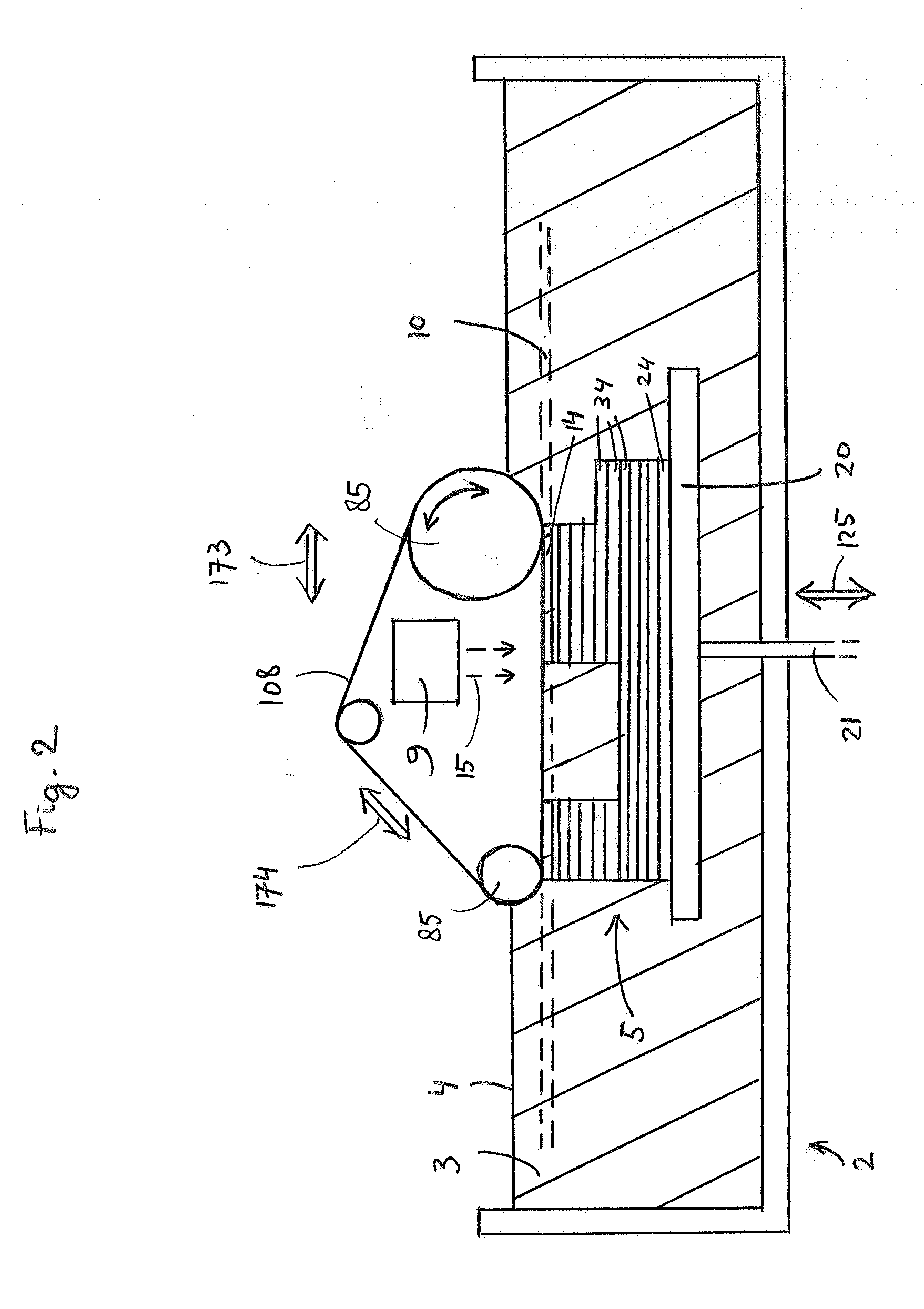Method and system for layerwise production of a tangible object
a tangible object and production method technology, applied in the direction of additive manufacturing, coatings, pretreated surfaces, etc., can solve the problems of limiting the speed of the production process, affecting the production efficiency of tangible objects, so as to achieve the effect of fast production of tangible objects
- Summary
- Abstract
- Description
- Claims
- Application Information
AI Technical Summary
Benefits of technology
Problems solved by technology
Method used
Image
Examples
Embodiment Construction
[0020]Each of the examples of FIGS. 1-5 relates to a system according to claim 9 that can perform an example of a method according to claim 1. In the respective figures sometimes the same reference signs are used for similar or identical parts or aspects of the systems.
[0021]Hence, each of the examples of FIGS. 1-5 relates to a system for layerwise production of a tangible object, the system comprising:
[0022]a liquid reservoir for containing a liquid therein;
[0023]a construction shape for being in contact with the liquid in the liquid reservoir;
[0024]solidifying means for solidifying a predetermined area of a layer of the liquid, said liquid layer adjoining the construction shape, so as to obtain a solid layer of the tangible object, the solid layer thus having a predetermined shape;
[0025]separating means for separating said solid layer from said construction shape;
[0026]moving means for moving, relative to one another, the separated solid layer and the construction shape to a prede...
PUM
| Property | Measurement | Unit |
|---|---|---|
| area | aaaaa | aaaaa |
| shape | aaaaa | aaaaa |
| flexible | aaaaa | aaaaa |
Abstract
Description
Claims
Application Information
 Login to View More
Login to View More - R&D
- Intellectual Property
- Life Sciences
- Materials
- Tech Scout
- Unparalleled Data Quality
- Higher Quality Content
- 60% Fewer Hallucinations
Browse by: Latest US Patents, China's latest patents, Technical Efficacy Thesaurus, Application Domain, Technology Topic, Popular Technical Reports.
© 2025 PatSnap. All rights reserved.Legal|Privacy policy|Modern Slavery Act Transparency Statement|Sitemap|About US| Contact US: help@patsnap.com



